|
Other Kalamazoo Companies
in World War Two:
Checker Car Company
Fuller Manufacturing Company
Ingersoll Steel and Disk Shakespeare
Company
Gibson, Inc. (Gibson
Guitar) During World War Two
Kalamazoo, MI
1902-1985
1985-Current Nashville, TN
This page added
1-9-2022.
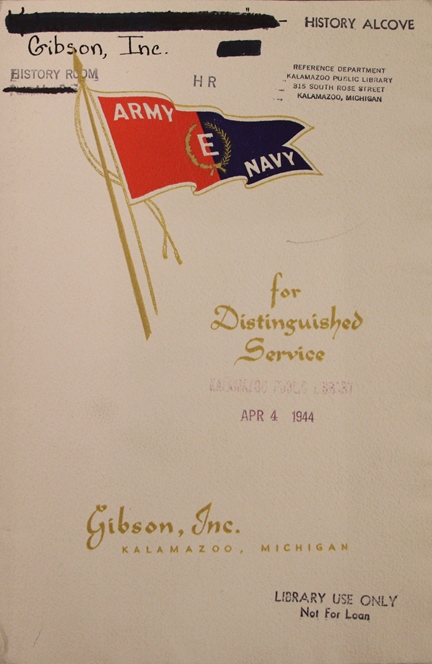
In April 1944, this document was given to
the Kalamazoo Library eleven days
after Gibson won its first Army-Navy "E" award. For 75 years the
library has kept this on file, waiting for someone to come along that
understood the significance of it and publish it for public viewing.
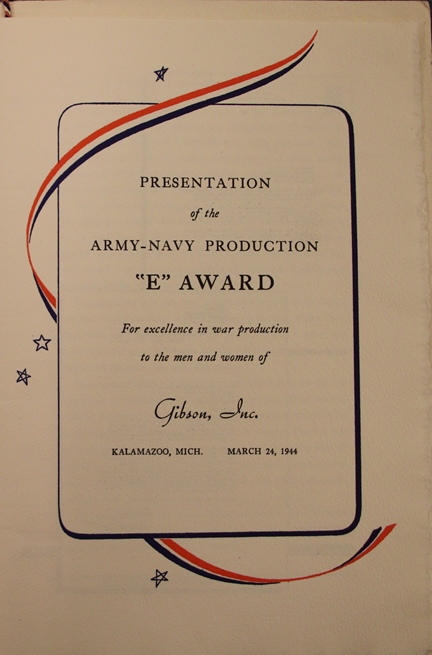
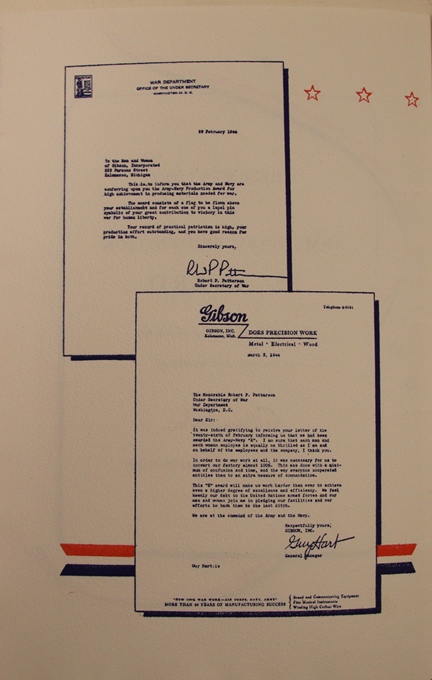
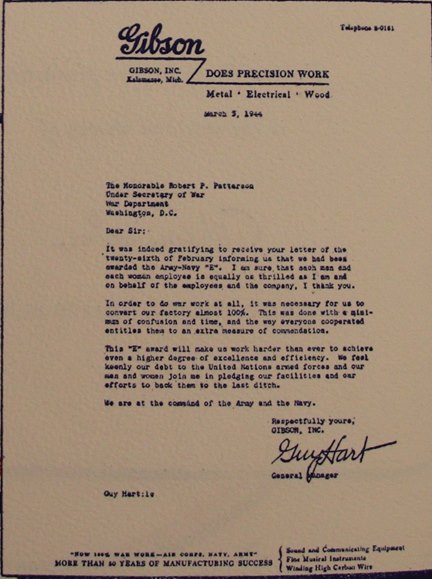
The letter states nearly 100% war conversion
for the Army and Navy. The stationary footer was printed to state
"Now100% War Work - Air Corps, Navy, Army."
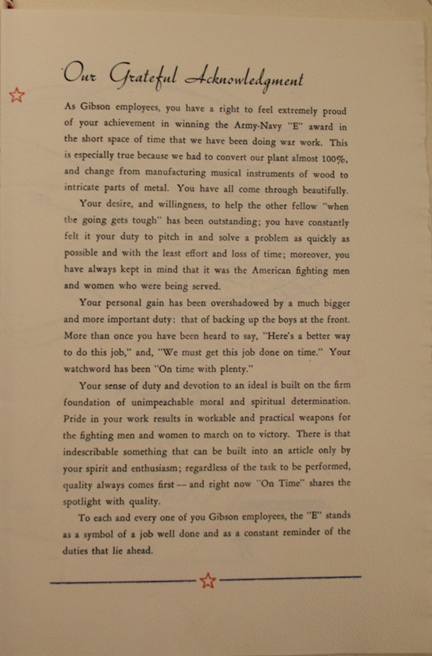
This page states that the company changed
from manufacturing wood musical instruments to make intricate metal parts.
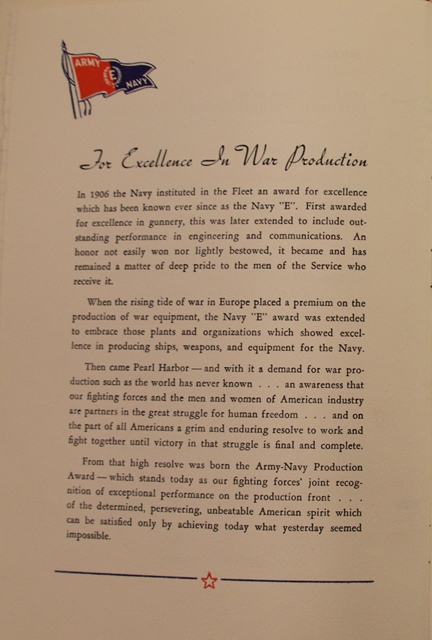
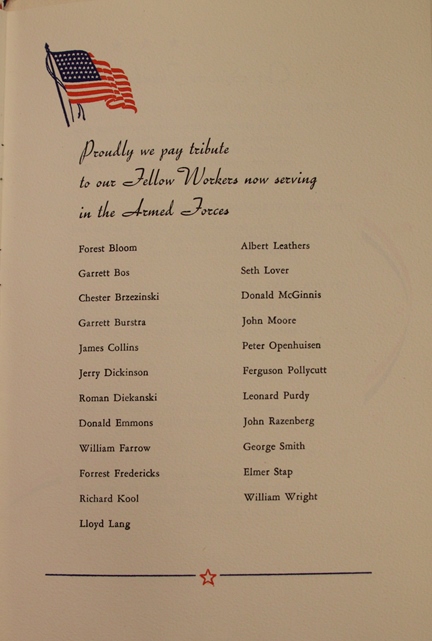
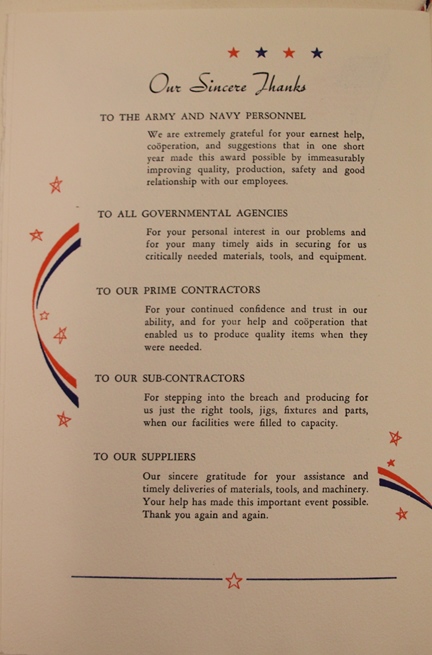
While the document notes that Gibson, Inc.
is 100% converted from making musical instruments to military products
for all of the military services, there is no mention of what those
products were. Local history and even a book focus on the fact
that "Kalamazoo Girls" that replaced the men in the factory that went
off to war made 25,000 unauthorized guitars.
After the war, the company even denied that the guitars were built.
What has been totally overlooked is that guitars do not win wars.
Military equipment supplied to men in uniform won the war.
Local historical records have virtually
nothing on what the women that came to work at Gibson made during the
war. The historical record only notes the company made military
glider and radar parts. It also notes that Gibson made "electrical
and mechanical radar assemblies for Zenith, RCA, and Western Electric to
name a few."
This is the extent of what is known on
Gibson's contribution to helping win World War Two.
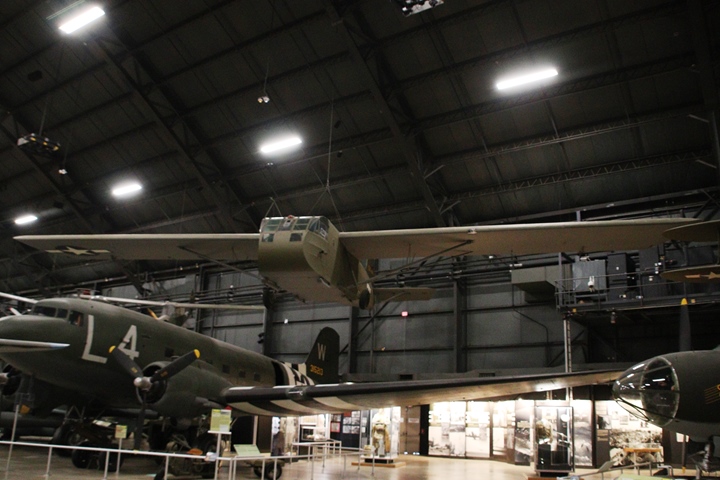
Information obtained at an aviation museum
in the Kalamazoo area identifies Gibson, Inc. of Kalamazoo as being a
supplier of landing skids for the CG-4A gliders built by Gibson
Refrigerator Company in nearby Greenville, MI. The wooden skids
would be an excellent product to supply, as its main pre-war product was
wooden guitars. Author's photo.
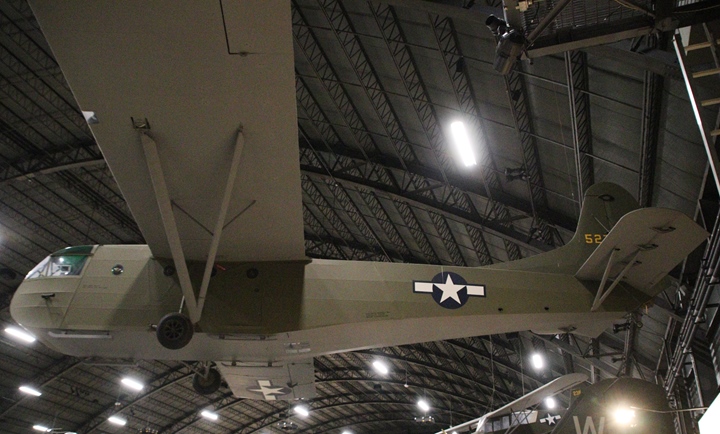
This Gibson Refrigerator Company-built CG-4A
is on display at the National Museum of the United States Air Force and
is serial number 45-27948. It is one of the 1,078 that the company
built during World War Two. Author's photo.
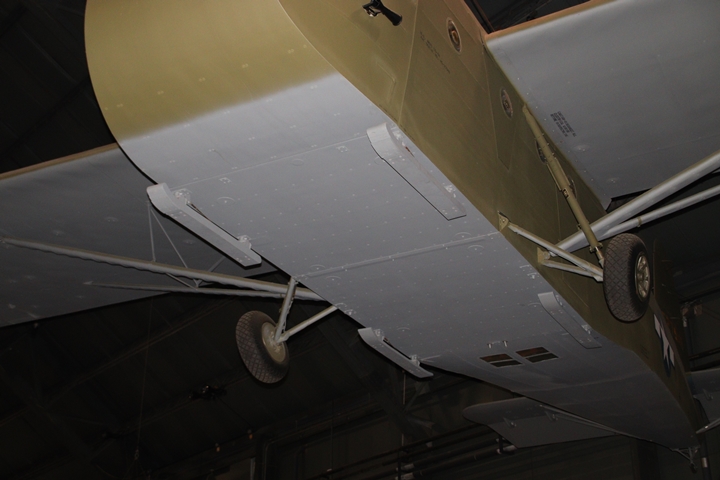
Each CG-4A glider had four landing skids.
Gibson, Inc, if it was the only supplier of the landing skids, would
have supplied 4,312. Author's photo.

However, Gibson Inc. won the Army-Navy "E"
award two more times during the war. It is doubtful it won any of
the awards for supplying simple wooden skids for gliders. Most likely it won
all three awards for its involvement as a sub-contractor to several
companies making radar components.
The only way to approach this is to examine some
of the radar products Zenith, RCA, and Western Electric made for the war
effort. These products will provide a general overview of what
Gibson Inc. might have built.
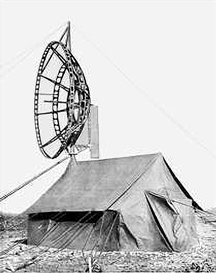
Zenith was a supplier of the AN-TPX-3 ground
to air radar.
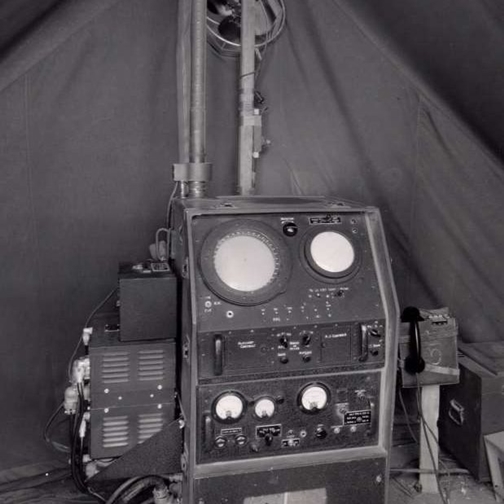
Gibson could have made parts for either the
antenna or receiver, or both.
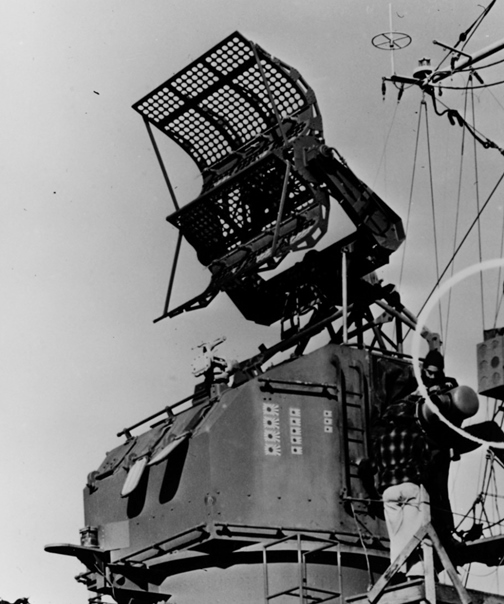
Western Electric made several different types
of radar during World War Two. This is a Mark4 FD fire control
radar that has credit for shooting down twelve Japanese aircraft. The FD radar
was used to control 40mm and 5-inch anti-aircraft guns on U.S. Navy
ships. Information from the radar was fed to servos on the gun
mounts which controlled the aim. The sailors that manned the guns
were only needed to supply ammunition to the weapons.
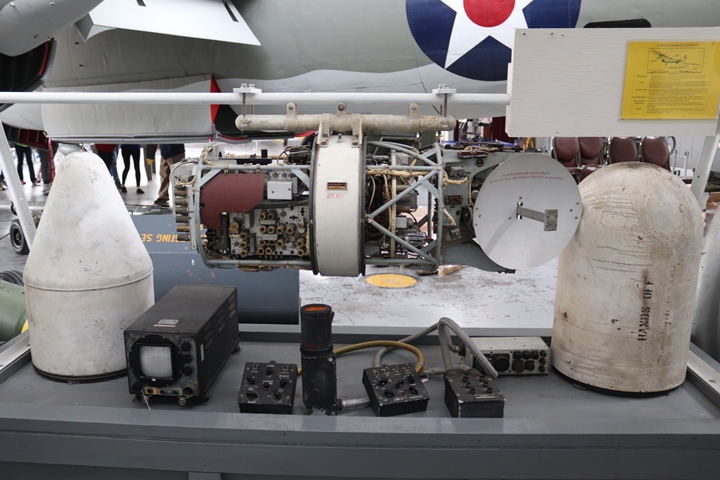
These are the components of a
Westinghouse-built AN-ASP-4 airborne X-band intercept radar used on many
American aircraft during World War Two.
However, Western Electric made the AN-ASP-5 air-to-radar which was used
on the F4U Corsair night fighter. The AN-ASP-5 was very similar to
the AN-ASP-4. Author's photo.
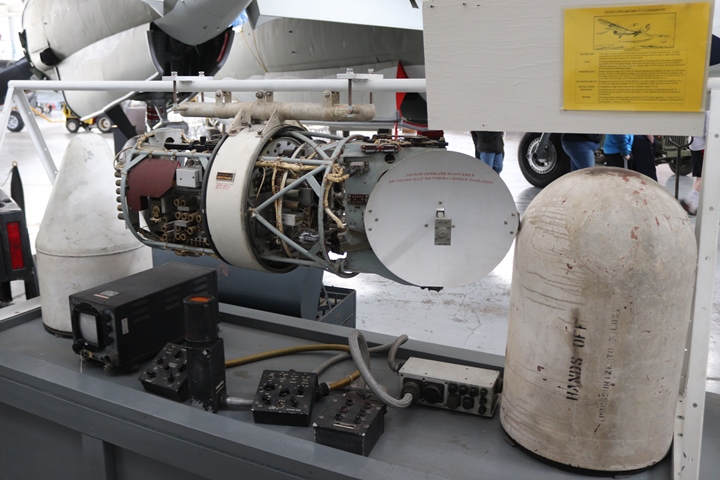
Gibson could have made components very
similar to these for the AN-ASP-5. Not knowing the full
extent to which companies it sub-contracted, it could have made some
of the parts shown here for Westinghouse. Author's photo.
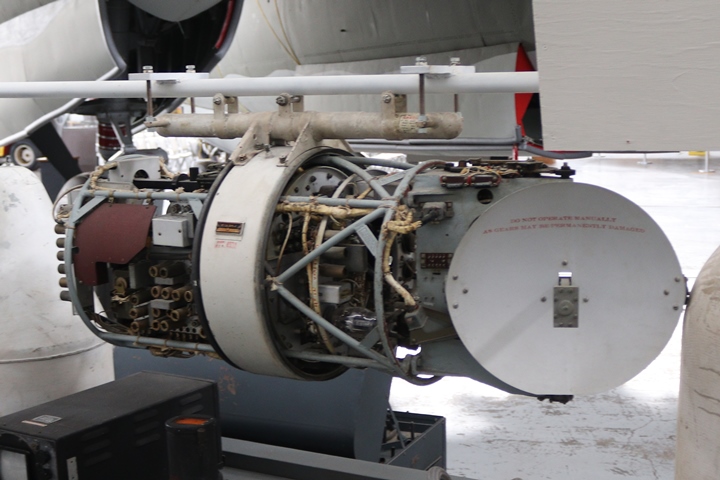
Author's photo.
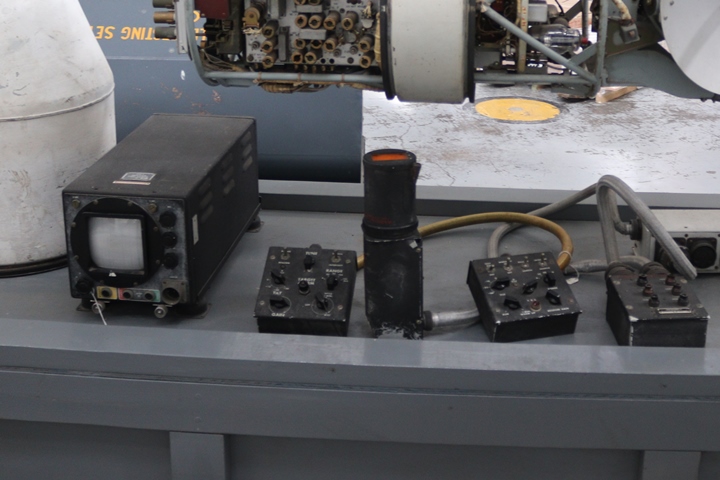
Author's photo.
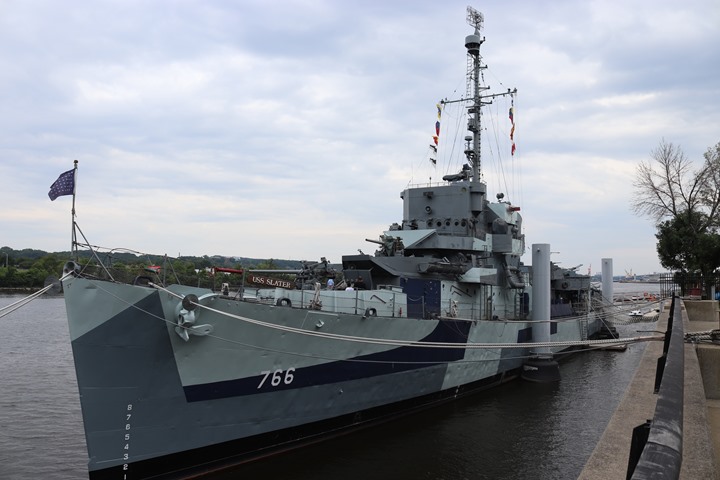
RCA produced 1,565 sets of SA Shipborne
Surface and Airborne Search Radar units for the U.S. Navy. These
were used primarily on destroyer escorts at destroyers. The top
antenna on the mast of the destroyer escort USS Slater appears to be the
SA radar antenna. This was the largest number of radar sets made
by any company during the war and was RCA's primary radar product.
If Gibson was making radar components for RCA, the SA radar would have
been what it would have been making parts for. Author's photo.
The Gibson Factory:
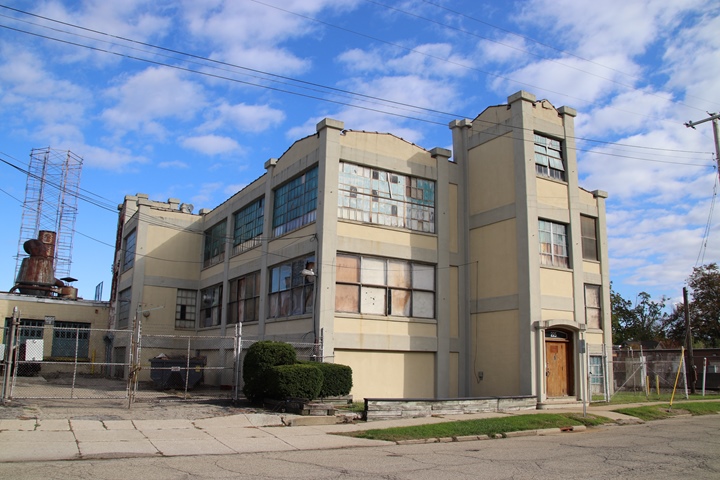
The Gibson Plant that built guitars for
musicians like Johnny Cash, Keith Richards, Chuck Berry, Elvis Presley,
B.B King, and Eric Clapton was built in 1917 and operated until 1985
when the company moved to Nashville, TN. Author's photo.
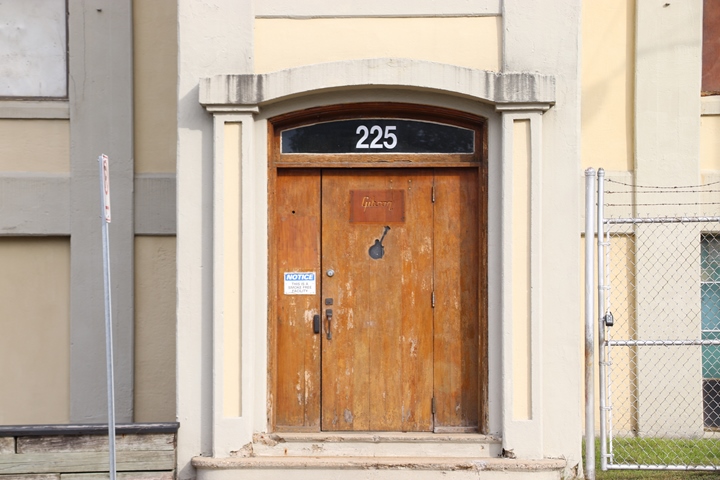
The former Gibson factory,with its iconic
front door, is one of the most photographed locations in Kalamazoo.
Author's photo.

Author's photo.
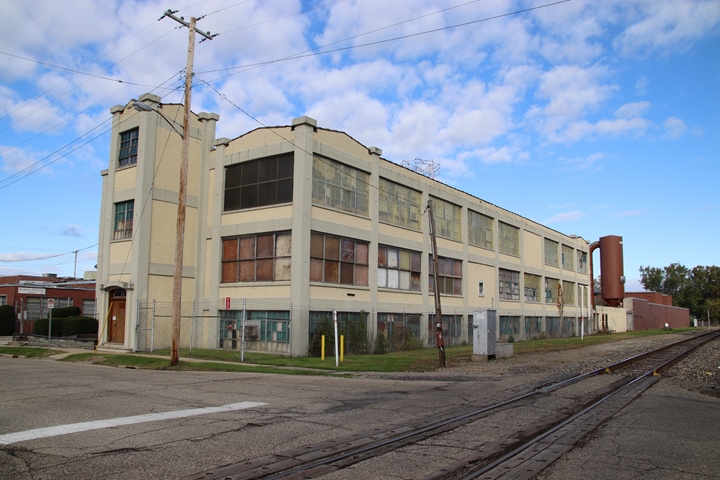
In early March 2021, multiple media outlets
carried the story that a Hard Rock Cafe, Hotel, and Brewery would
re-purpose the old factory. This would all be accomplished by the
fall of 2023. Seriously? Surely they jest. This is a one hundred year old
factory on the residential near north side of Kalamazoo. It is
five blocks north of downtown Kalamazoo with no wide streets leading to it, making it difficult to get to. There is an old railroad track
that runs next to the factory which may still be active. Author's
photo.
Since the initial announcements there have
been no further reports in the news media on progress of the project.
When I visited the plant in October 2021, there was no evidence of any
work being done. Cannabis is now legal in Michigan, and as one
drives west on I-94 towards Kalamazoo from I-69, there are multiple billboards of
companies advertising their particular brand of cannabis in Kalamazoo. It could
very well be that the person or persons responsible for taking on this
project have been smoking too much cannabis.
I could be wrong and this project will proceed
as planned. If so, I will return to this location in late 2023 and
have an overpriced burger and beer in the Gibson Hard Rock Cafe.
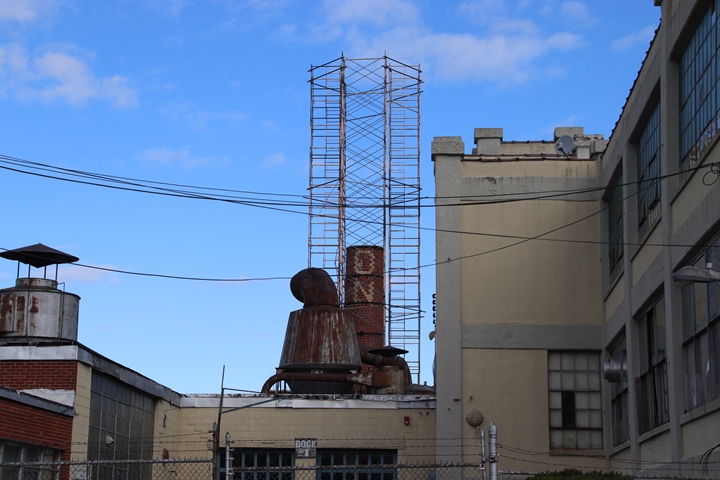
An artist's depiction of the new hotel and
restaurant complex shows the smoke stack still in place.
Obviously, the artist did not do his homework as the smokestack is being
taken down brick by brick. While many in Kalamazoo did not want to
see the iconic landmark taken down, it had to come down due to safety
issues. The only way to do this in a safe manner is to do it one
brick at time. Author's photo.
But who knows, maybe the project developers
are planning to build a new smoke stack as part of the project.
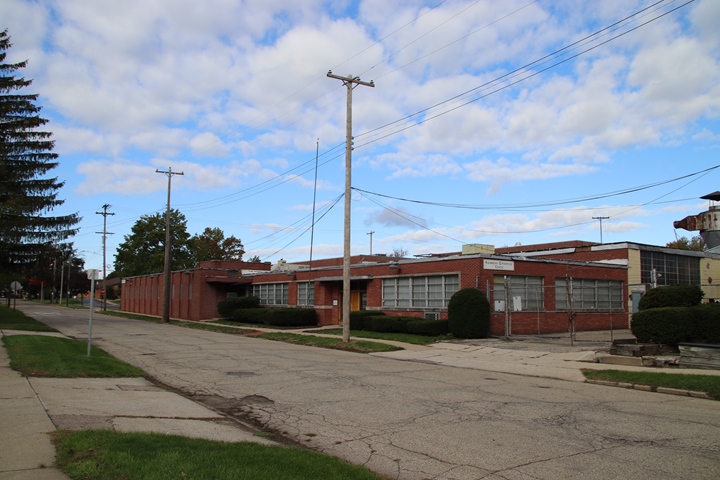
This portion of the former Gibson factory is
currently the Kalamazoo Enterprise Center. Author's photo.
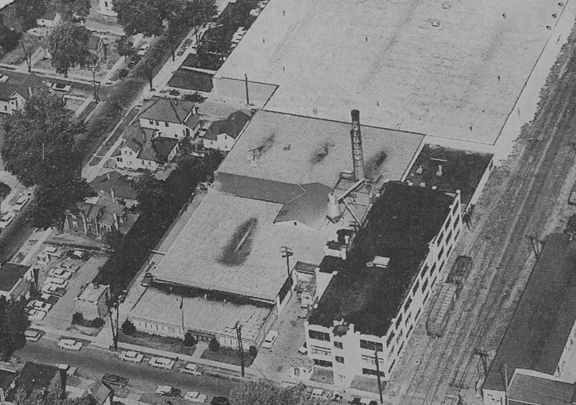
This is an aerial view of the factory when
there were multiple railroad tracks on the east side of the complex.
The factory is in the middle of a residential area that grew up around
the plant. When built in 1917, this area of Kalamazoo was what
today is called a green field site.
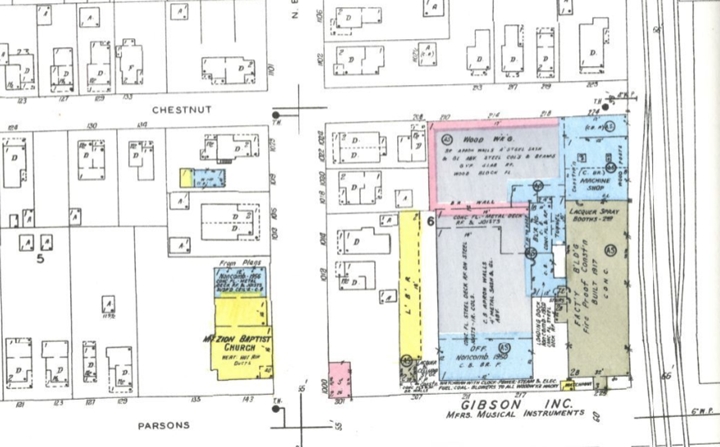
This 1958 Sanborn map shows that the Gibson
factory was bounded to the west and north by houses and by the railroad
on the east side. Not shown in this view are the houses to the
south of the plant.
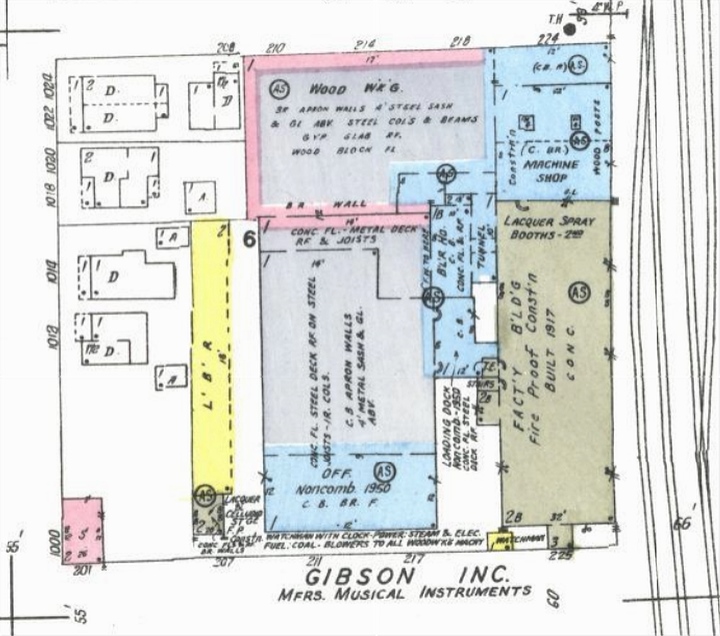
|




























